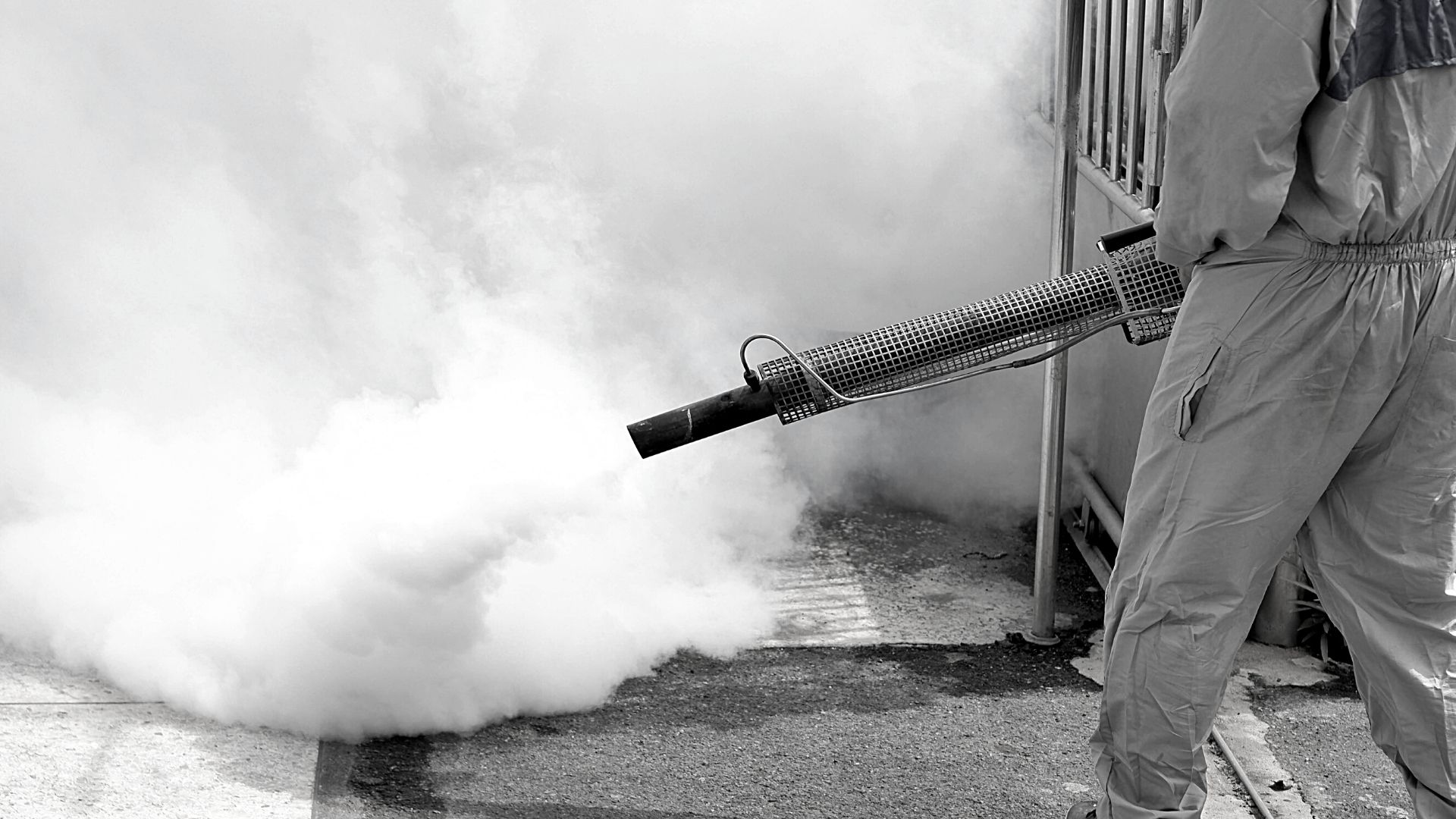
Disinfectant Fogging has become one of the latest methods being employed in the battle against infection control in the dental office. But is it safe?
To answer this question, we reviewed the latest research and commentary from chemical engineers.
Disinfectant Fogging is a means of chemical disinfection whereby a device is used to generate a fine mist or fog of chemical ingredients into an area to kill microorganisms and airborne pathogens in the air and on surfaces.
Hypochlorous acid HOCI, Quaternary Ammonium, and Hydrogen Peroxide are the most common chemicals used for disinfectant fogging.
EPA and CDC guidance for disinfectant fogging.
It’s important to note that only Hydrogen Peroxide is the only chemical approved by the EPA for fogging listed in their List N Tool: COVID-19 Disinfectants.
The EPA even states on their website that “unless the pesticide product label specifically includes disinfection directions for fogging, fumigation, or wide-area or electrostatic spraying, EPA does not recommend using these methods to apply disinfectants”.
However, just because something is approved by the EPA doesn’t necessarily mean it’s safe.
For COVID-19 specifically, the CDC does not list fogging as a recommended cleaning method:
In most cases, fogging, fumigation, and wide-area or electrostatic spraying are not recommended as primary methods of surface disinfection and have several safety risks to consider, unless specified as a method of application on the product label.
They do list using EPA “N List” products–where you will find HOCI and other ammoniums however the ONLY chemical recommended for fogging usage is Hydrogen Peroxide.
This is where a lot of confusion comes into play.
Someone will see a chemical on the EPA list then thinks it’s okay for any kind of use.
This couldn’t be farther from the truth…
In reality, the same EPA list also has a “formulation type” column for each chemical listed; this column lists the approved method of cleaning.
Keep in mind, proper usage of fogging must be done by a professional with approved equipment that’s listed by the chemical manufacturer’s guidelines.
These restrictions are also mentioned by the CDC and EPA when using disinfectants.
It’s reported that some offices are purchasing fogging devices and using them without the aid of a professional, clearly against recommendations.
Regardless of proper or improper application of fogging in dental offices, what does the research have to say about the safety of fogging?
A 2020 research study published in the International Journal of Hygiene and Environmental Health noted that chemicals to be of most likely concern where strong acids, bases, and quaternary ammonium compounds. The same chemicals many are currently using for fogging dental offices.
The study also pointed to the fact the very little research has been done regarding spray and aerosolized chemical exposure to humans in general.
Many researchers note the EPA is unable to distinguish if the fog is safe for humans after it turns into dry mist since it can interact with the ambient air and immediate environment differently.
Several health incidents have occurred through the related to the use of chemical fogging spurning labor and advocacy groups to suggest that fogging violates the Federal Insecticide, Fungicide, and Rodenticide Act (FIFRA).
Doug Collins, a chemist and Asst. Prof. at Bucknell University and other chemists commented regarding the current use of HOCI foggers in dental offices. You can find the entire conclusion here: https://twitter.com/EarthMechanic/status/1294101002442944512 but we’ve paraphrased some key points in the quotes below.
“HOCl can react with molecules present in the indoor environment to produce toxic gaseous products. For example, Cl2 gas is formed from reactions with chloride, HOCl reacts with ammonia and amines to produce chloramines – both are known to be harmful.”
“There is no advantage to fogging compared to just waiting between uses, other than surface disinfection – there are safer ways to disinfect surfaces”
“We recommend instead to use $$ on HEPA air cleaners or makeshift fan-filter cleaners: proven to work, easy to use, no side effect. And in a dental office, they work where needed most, **when the patient is in the chair**, not only between patients.”
The CDC and HIPAC have also made statements regarding chemical fogging in both 2003 Guidelines for Environmental Infection Control in Health-Care Facilities and the 2008 Guideline for Disinfection and Sterilization in Healthcare Facilities that state that the CDC does not support disinfectant fogging.
Specifically, the 2003 and 2008 Guidelines state:
- 2003: “Do not perform disinfectant fogging for routine purposes in patient-care areas. Category IB”
- 2008: “Do not perform disinfectant fogging in patient-care areas. Category II”
Still, many argue that fogging is safe and frequently mention that the 3 major airlines use fogging to make air travel safer.
But as we’ve found with most things regarding the pandemic, many “old” technologies are being put to the test and reevaluated.
What do experts think?
At our recent OSAP panel, a question came up for atmospheric and building ventilation experts about their stance on hypochlorous fogging. The response was a swift and resounding NO.
There does seem to be one reoccurring recommendation for dental offices that continues to hold up: the HEPA Air Purifier.


